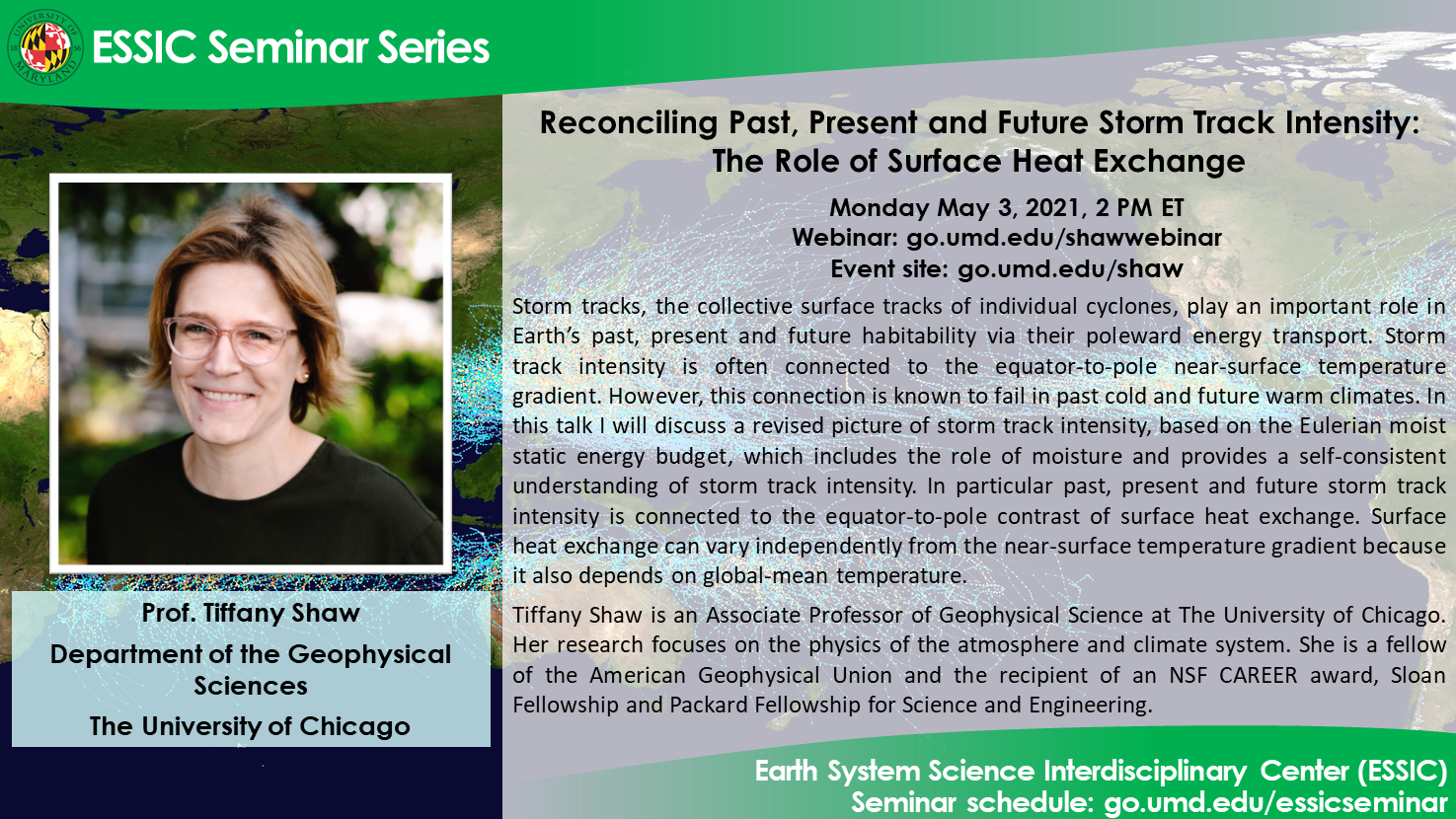
Reconciling Past, Present and Future Storm Track Intensity: The Role of Surface Heat Exchange
This event has passed. See the seminar recording here:
Prof. Tiffany Shaw
Department of the Geophysical Sciences
The University of Chicago
Monday May 3, 2021, 2 PM ET
Abstract:
Storm tracks, the collective surface tracks of individual cyclones, play an important role in Earth’s past, present and future habitability via their poleward energy transport. Storm track intensity is often connected to the equator-to-pole near-surface temperature gradient. However, this connection is known to fail in past cold and future warm climates. In this talk I will discuss a revised picture of storm track intensity, based on the Eulerian moist static energy budget, which includes the role of moisture and provides a self-consistent understanding of storm track intensity. In particular past, present and future storm track intensity is connected to the equator-to-pole contrast of surface heat exchange. Surface heat exchange can vary independently from the near-surface temperature gradient because it also depends on global-mean temperature.
Biosketch:
Tiffany Shaw is an Associate Professor of Geophysical Science at The University of Chicago. Her research focuses on the physics of the atmosphere and climate system. She is a fellow of the American Geophysical Union and the recipient of an NSF CAREER award, Sloan Fellowship and Packard Fellowship for Science and Engineering.
Webinar:
Webinar thread: https://go.umd.edu/shawwebinar
Event site: https://go.umd.edu/shaw
Webinar number: 120 432 3044
Webinar password: essic
To join the audio conference only:
US Toll: +1-415-655-0002
Global call-in numbers
For IT assistance:
Cazzy Medley: cazzy@umd.edu
Travis Swaim: tswaim1@umd.edu
Resources:
Seminar schedule & archive: https://go.umd.edu/essicseminar
Seminar Google calendar: https://go.umd.edu/essicseminarcalendar
Seminar recordings on Youtube: https://www.youtube.com/user/ESSICUMD

